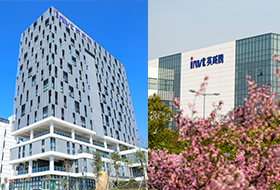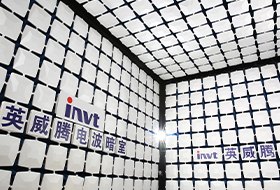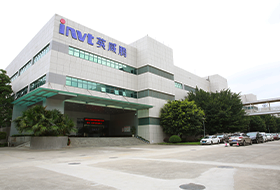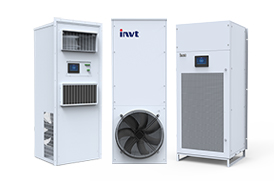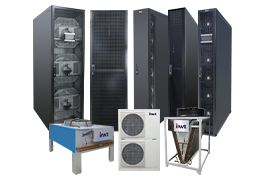What is Data Center Classification? The Importance of Classification!
When it comes to data centers (DCs), it's helpful to understand what data center tiers are and how they affect IT organizations. First, here is a brief explanation of what data center grading is. Data center grading tells people the level of data centers and their value.
What is Data Center Rating?
Data center tiering is a standard way of ranking data centers by potential infrastructure performance (uptime). Data centers are divided into four grades from 1 to 4, and the potential uptime of data centers with higher grades is higher than that of data centers with lower grades.
Below are the four data center tiers currently recognized by the Uptime Institutes, along with uptime and availability for each tier.
Level 1 (Basic Ability)
Tier 1 data centers include servers located in separate offices or large cubicles within larger facilities. Level 1 DC requires dedicated space for all IT systems (the server room may or may not include locked doors), an uninterruptible power supply (UPS) that regulates input power to prevent peak voltage damage to equipment, and air conditioning equipment that ensures 24x7x365 uninterrupted operation, and generators to keep equipment running during extended power outages.
Level 2 (redundancy capability)
A Tier 2 data center contains all the characteristics of a Tier 1 DC. At the same time, it also includes partially redundant power and cooling components (power and cooling systems are not fully redundant). Tier 2 DCs have higher requirements than Tier 1 DCs, providing some level of extra protection for power and cooling to avoid processing interruptions.
Level 3 (DCs can be maintained in parallel)
Tier 3 DCs contain all the characteristics of Tier 1 and Tier 2 data centers. Tier 3 data centers require that any power and cooling equipment used for DC can be shut down for maintenance without affecting IT processing. All IT equipment must be equipped with dual power supplies connected to different UPSs. That way, if one UPS power goes out, it won't damage the server or interrupt the network connection. Redundant cooling systems must also be configured so that if one cooling system fails, the other system can be switched to cool the room. Tier 3 DCs are not configured for fault tolerance because they can share different components such as utility power lines and external cooling system components located outside the data center.
Level 4 (fault tolerance)
A level 4 DC contains all the functions of a level 1, 2, and 3 DC. In addition, all Tier 4 power and cooling components are fully redundant in 2N configuration, that is, all IT components are equipped with two different mains sources, two generators, two UPS systems, two power distribution units (PDU) and two cooling systems powered by different power companies (secondary power supply). Each data and cooling channel is independent of each other (full redundancy). If any one of the power or cooling components in the 4-level DC fails, processing can continue without issue. IT processing is only affected if two different power or cooling channels both fail.
Data Centers Ranked by Uptime
The operating time of the data center is expressed as a percentage of the annual available time of the data center, and the percentage of operating time increases accordingly for each level of the data center.
Below are the standard uptime percentages for each tier of data centers, and the expected maximum DC downtime.
• Level 1 DCs run 99.671% of their annual operating hours. Maximum total downtime per year = 1729.2 minutes or 28.817 hours per year
• Level 2 DCs run 99.741% of the year. Yearly Maximum Total Downtime = 1361.3 minutes or 22.688 hours
• Level 3 DCs run 99.982% of their yearly percentage of time. Yearly Maximum Total Downtime = 94.6 minutes or 1.5768 hours
• Level 4 DCs run 99.995% of the time per year. Yearly Maximum Total Downtime = 26.3 minutes or 0.4 hours
Note that with any of these one-level DC models, actual results may vary (YMMV). Due to the high degree of redundancy, tier 3 and 4 uptime percentages are more accurate and consistent, whereas tier 1 and 2 DCs may take longer to process outages, depending on what caused the downtime.
What can data center classification do?
It is also important to know whether your business needs to use a tier 1, 2, 3 or 4 data center provider.
Tier 1 or 2 data centers may be suitable for smaller companies that do not require 24×7 continuous operation and can be shut down for maintenance after hours or on weekends. In this case, it may not be worth the extra investment to run in a level 3 or 4 environment.
However, if you are a large multinational company that operates 24/7 and has several critical applications that must not be interrupted, you can choose a Tier 3 or 4 data center to host the applications, or bring your own in-house data center to Tier 3 or 4 standards.
DC grading is also important in several different situations, including:
When planning to migrate a data center to an external vendor or cloud service provider, data center tiering helps understand the risks involved in using these providers When building or redesigning a data center, provides a setup and configuration blueprint that meets your needs Hosted customer key When applying, they may want to know your data center rating, who your DC is certified by, and the certification standard used. Prove network availability to management under risk assessment scenarios. Who certifies data centers?
Data centers generally use the Uptime Institutes (Uptime Institutes) standard rating system, or the TIA/942 standard for rating certification. Data centers are certified and rated according to these standards.

 networkpowersales@invt.com.cn
networkpowersales@invt.com.cn
